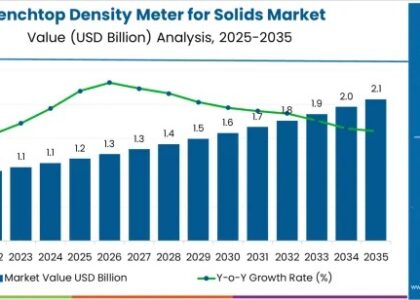Introduction:
In the ever-evolving landscape of fitness, the integration of smart technology has emerged as a transformative force. The Smart Fitness Market, encompassing a range of wearable devices, smart equipment, and digital platforms, is revolutionizing how individuals engage with their health and wellness routines. This PR explores key insights, trends, and the competitive landscape shaping this dynamic industry.
Key Insights:
The Smart Fitness Market has witnessed exponential growth in recent years, driven by increasing health consciousness and advancements in technology. With the proliferation of smartphones and the Internet of Things (IoT), consumers now have access to an array of innovative fitness solutions at their fingertips. From activity trackers and smartwatches to AI-powered virtual coaches, the market offers a diverse ecosystem tailored to individual needs.
Moreover, the COVID-19 pandemic has further accelerated the adoption of smart fitness solutions, as lockdowns and social distancing measures prompted consumers to seek alternative ways to stay active and maintain their well-being from the comfort of their homes. This shift in consumer behavior has created a surge in demand for home fitness equipment and virtual workout platforms, propelling the Smart Fitness Market to new heights.
Key Trends & Competitive Landscape:
Several key trends are shaping the Smart Fitness Market and driving innovation within the industry. Personalization is paramount, with consumers seeking tailored fitness experiences that align with their goals, preferences, and lifestyles. As a result, companies are leveraging data analytics and artificial intelligence to deliver personalized workout routines, real-time feedback, and actionable insights to users.
Integration with other health and wellness ecosystems is another prominent trend, as smart fitness devices increasingly collaborate with nutrition apps, sleep trackers, and mindfulness platforms to offer comprehensive health solutions. Furthermore, the gamification of fitness, through challenges, rewards, and social engagement features, has emerged as a powerful motivator for users to stay active and engaged.
In terms of the competitive landscape, the Smart Fitness Market is characterized by intense competition and rapid innovation. Established players such as Apple, Garmin, and Fitbit continue to dominate with their flagship wearable devices, while startups and tech giants alike are entering the market with disruptive solutions. From smart mirrors and connected strength training equipment to AI-driven fitness apps, companies are vying for market share by offering unique value propositions and user experiences.
Regional Outlook:
The adoption of smart fitness technology varies across regions, influenced by factors such as technological infrastructure, cultural attitudes towards health and fitness, and economic conditions. Developed markets like North America and Europe lead the way in terms of penetration and innovation, driven by a tech-savvy population and a robust fitness culture.
However, emerging markets in Asia-Pacific and Latin America present significant growth opportunities for smart fitness companies, fueled by rising disposable incomes, urbanization, and increasing awareness of health and wellness. Moreover, government initiatives promoting physical activity and preventive healthcare are further catalyzing market growth in these regions.
In conclusion, the Smart Fitness Market represents a convergence of technology and wellness, empowering individuals to take control of their health journey like never before. With continued innovation and investment, the industry is poised for sustained growth, promising a future where fitness is smarter, more accessible, and more personalized than ever.





